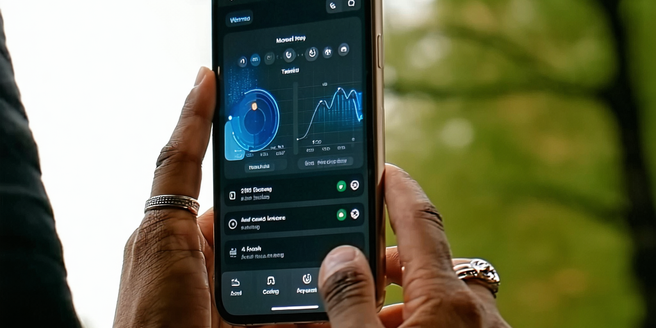
Bluetooth Speakers: Jbl Vs. Bose
Discover the key differences between JBL and Bose Bluetooth speakers in terms of design, sound performance, battery life, connectivity, and pricing. JBL is known for crafting rugged, durable speakers ideal for outdoor use, providing powerful bass and dynamic sound perfect for energetic environments. Bose, on the other hand, offers sleek, sophisticated designs with a focus on clarity and balanced sound, appealing to those who prioritize vocal and instrumental precision. Both brands offer practical portability and advanced features, although JBL tends to be more budget-friendly while Bose offers a premium audio experience at a higher price point. Choose JBL for affordability and ruggedness, or opt for Bose if you seek elegance and superior sound fidelity.

Digital Collaboration Tools
Digital collaboration tools are essential for modern productivity, enabling real-time teamwork across distances and promoting efficiency. These tools encompass a range of applications like video conferencing, file sharing, and project management software, crucial for remote work success. They support flexible work environments, inclusivity, and teamwork, giving businesses a competitive edge. Collaboration software specifically enhances communication, organization, and task transparency, leading to faster decision-making and agility. Popular platforms such as Microsoft Teams, Slack, Asana, and Zoom offer unique features to meet diverse business needs. Key considerations when selecting tools include ease of use, integration, security, and scalability. Despite their benefits, challenges like learning curves and connectivity issues must be addressed through training and support for effective digital collaboration.

Wearable Fitness Tech
Wearable technology in fitness is transforming health and exercise experiences, with devices like smartwatches and fitness bracelets providing real-time data on heart rate, steps, and calorie burn. These advancements in sensor technology are driving a shift towards preventive health strategies. Key features to consider when choosing a fitness wearable include accurate tracking, battery life, smartphone compatibility, water resistance, and a user-friendly interface. This technology enhances workout routines by offering personalized feedback and integrating with health apps for holistic fitness tracking. Leading brands such as Fitbit, Garmin, and Apple Watch offer diverse features catering to various needs. Future trends in wearable fitness technology include AI integration for personalized insights, advanced biometric sensing, and augmented reality features, highlighting the evolving role of wearables in health management.

5g Technology
5G technology represents the next evolution in mobile networks, offering faster data speeds, lower latency, and enhanced connectivity. Building on previous generations, it utilizes advanced antenna technology and wider bandwidths to provide seamless experiences. 5G is set to revolutionize industries by enabling applications like autonomous vehicles, remote healthcare, and smart cities. Key features include higher speeds, real-time communication capabilities, and support for a higher density of connected devices, making it ideal for the Internet of Things. These features differentiate 5G from earlier generations, offering transformative changes in connectivity. However, the deployment of 5G poses challenges, including infrastructure investment, security concerns, and spectrum management. As countries roll out 5G infrastructure, understanding its impact on industries like manufacturing, healthcare, and education becomes critical. The future of 5G promises exciting developments, with researchers exploring 6G for even faster speeds and improved connectivity, transforming society and enhancing quality of life globally.

Cable Management Solutions For Tidiness
Cable management is essential for both residential and professional settings, as it improves efficiency and device longevity while reducing hazards. Proper cable organization enhances aesthetics, prevents clutter, and facilitates troubleshooting. Essential tools for effective cable management include cable ties, clips, mounts, Velcro straps, sleeves, and labeling devices, all of which help create a streamlined workspace. Adopting systematic organizing methods, such as sorting and bundling cables, labeling them for easy identification, and concealing them with cable boxes, ensures a tidy and functional setup. Innovative solutions like magnetic cable holders, under-desk trays, and floor raceways are particularly beneficial for home offices. Budget-friendly DIY options, such as using household items for cable organization, provide creative ways to manage cables without additional expenses. Regular maintenance, including dusting and inspecting cables, helps maintain a neat and safe environment.

Ai In Digital Content Creation
AI is revolutionizing content creation by automating repetitive tasks and enabling creators to produce high-quality, personalized content efficiently. By utilizing AI algorithms, content creators can generate text, visuals, and music, allowing them to focus on strategy and creativity. The technology also offers benefits like increased efficiency and precision, AI-driven content optimization for better SEO, and real-time adjustments based on consumer behavior. AI tools, such as Natural Language Generation and design software, streamline the production process, while AI-driven analytics provide insights for future strategies. Though challenges like ethical concerns and cultural nuances exist, the future of AI in content creation appears promising as advancements in machine learning and natural language processing enhance content personalization and creativity.

Ai’s Contribution To Mental Health
Artificial Intelligence (AI) is increasingly crucial in mental health support by providing personalized therapy sessions and monitoring patient moods through apps and online platforms. AI tools use natural language processing and machine learning to analyze data for anxiety or depression signs, enabling timely intervention and 24/7 support. They enhance accessibility and affordability in mental health care. Machine learning transforms therapy approaches by offering data-driven insights, tailoring interventions, and improving therapy efficacy. AI technology aids in early detection of mental health issues by analyzing user interactions and predicting mental health risks, enhancing prevention and treatment access. Chatbots offer scalable and immediate support, although they lack the nuanced empathy of human counselors, serving as valuable tools for initial counseling. Real-world AI applications, like Woebot, demonstrate comparable efficacy to traditional therapy for managing mild anxiety and depression symptoms, showcasing AI’s potential in mental health care.

Space Exploration Technology
The evolution of rocketry and space vehicles from military uses during World War II to present-day innovations like the reusable SpaceX Falcon 9 rocket has revolutionized scientific exploration and space travel. The launch of Sputnik in 1957 marked a significant milestone, initiating an era of space exploration that has led to international collaboration as seen with the International Space Station and missions focused on the Moon and Mars. Simultaneously, satellite technology has transformed communication, navigation, and earth observation, with advancements like Cubesats and improved propulsion systems enhancing functionality and global connectivity. AI and robotics play a crucial role in modern space missions by processing data and assisting with tasks beyond human capability, such as Mars rover navigation and robotic assistance on the ISS. Space exploration has also spurred technological innovation on Earth, contributing to developments like GPS, MRI machines, and sustainable energy solutions with solar panels. Future prospects for human settlements in space are under exploration, with Moon and Mars bases being planned, although challenges like radiation exposure and resource management remain. This drive towards space settlement is inspired by issues like overpopulation, promising solutions beyond Earth through collaborative efforts and technological advancements.

Cryptocurrency And Digital Assets
Cryptocurrency is a digital currency utilizing cryptography for secure transactions, distinct from government-backed currencies due to its decentralization and use of blockchain technology. Blockchain acts as a secure, transparent ledger for transactions, enhancing trust in the management of digital assets like cryptocurrencies. The rise of cryptocurrencies has significantly impacted global markets, presenting new investment opportunities and challenging conventional financial systems. However, while cryptocurrencies promote transparency, they also raise concerns about privacy and security. Future trends in digital assets revolve around decentralized finance and the growing interest in non-fungible tokens, as well as the exploration of central bank digital currencies for broader adoption.

Reducing Operational Costs With Tech
Reducing operational costs through technology begins with identifying resource-intensive processes, often found in logistics, supply chain management, and manpower utilization. Conducting audits and using data analysis tools can pinpoint inefficiencies, which can be improved via automation and workflow optimization. Automation streamlines repetitive tasks, reduces errors, and enhances efficiency, offering a competitive advantage. Cloud solutions provide flexible, scalable resources, eliminating the need for costly infrastructure and enhancing remote collaboration. Data analytics uncovers hidden cost-saving opportunities, enabling strategic decision-making and proactive risk management. Streamlined communication via technology reduces travel costs, enhances productivity, and accelerates decision-making. Implementing these technological strategies empowers businesses to improve efficiency, reduce costs, and boost profitability.

Green Tech Solutions
Green technology is rapidly advancing, focusing on sustainability by reducing environmental impacts through innovative products, processes, and policies. Key trends include developments in solar and wind energy, efficient battery storage, and the rise of smart grids and IoT devices for improved energy distribution. Global governmental policies are supporting green tech investments, driving business innovation towards a cleaner environment. In renewable energy, advancements like perovskite solar cells and floating wind farms, alongside improved smart grid integration and battery storage, are crucial for reducing fossil fuel reliance. In transportation, electric vehicles and solar-powered charging stations are paving the way for eco-friendly options, while public transport embraces electric and hybrid solutions. Sustainable agriculture is enhanced by techniques like permaculture and technology such as precision farming, fostering food security and ecosystem health. Energy-efficient home solutions, including insulation, smart thermostats, and renewable energy sources like rooftop solar panels, reduce energy use and costs, promoting sustainable living. The industrial sector is transforming with energy-efficient technologies, IoT, machine learning, and circular economy initiatives, driven by economic and environmental benefits, heralding further green advancements in industry.
